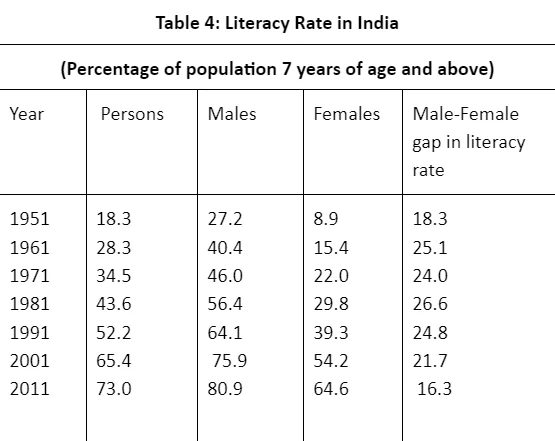![]() 12 Dec 2023
12 Dec 2023
Sex Ratio measures the number of females per 1000 males. India has been suffering from a declining sex ratio in India for more than a century, from 972 females per 1000 males at the turn of the twentieth century, the sex ratio in India has declined to 933 at the turn of the twenty-first century.

Map of Child Sex Ratios (0-6 Years) Across States, 2011 (Source: Census Report of 2011)
|
Do you Know ? Lowest child sex ratios are found in the most prosperous regions of India. According to the Economic Survey Maharashtra, Punjab, Haryana, Chandigarh and Delhi are having high per capita income and the child sex ratio of these states is still low. So the problem of selective abortions is not due to poverty or ignorance or lack of resources but of patriarchal mindset. |
|---|
Reasons for the Decline in the Sex Ratio in India: Government Initiatives and Challenges

Steps taken by the Government

Literacy Rate Among Various Sections of Indian Society: Gender, Social, and Regional Disparities

|
POINTS TO PONDER There has been huge changes in the demography in Indian society. Can you think of different reasons for huge improvements in the health, literacy and economic standards of the people? |
|---|
Population Policy in India: Controversy to Reform
|
Glossary:
|
|---|
<div class="new-fform">
</div>